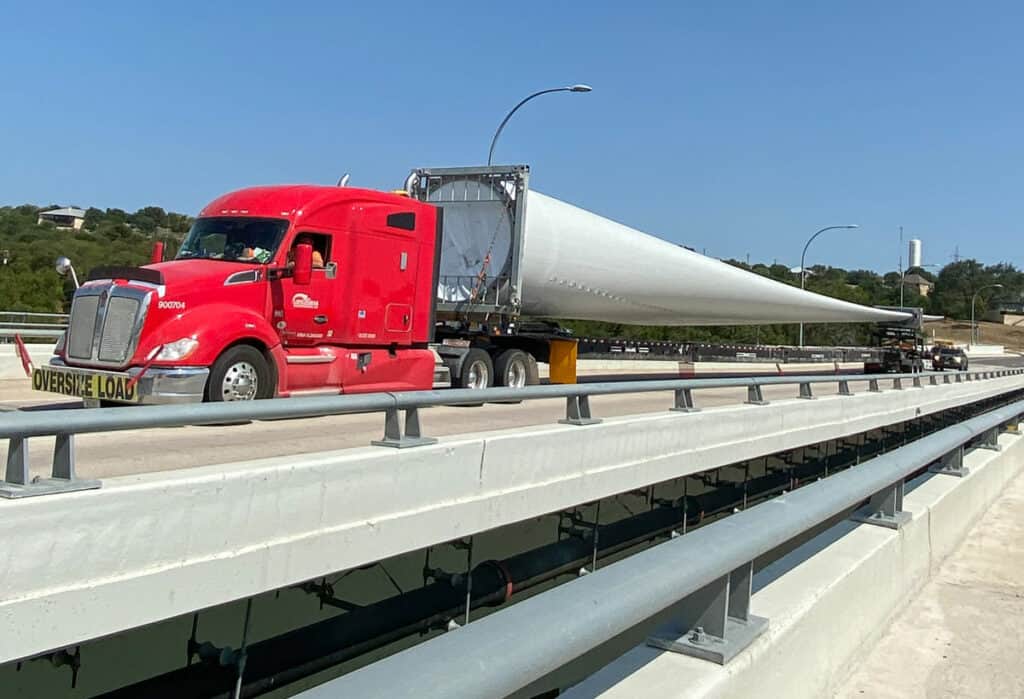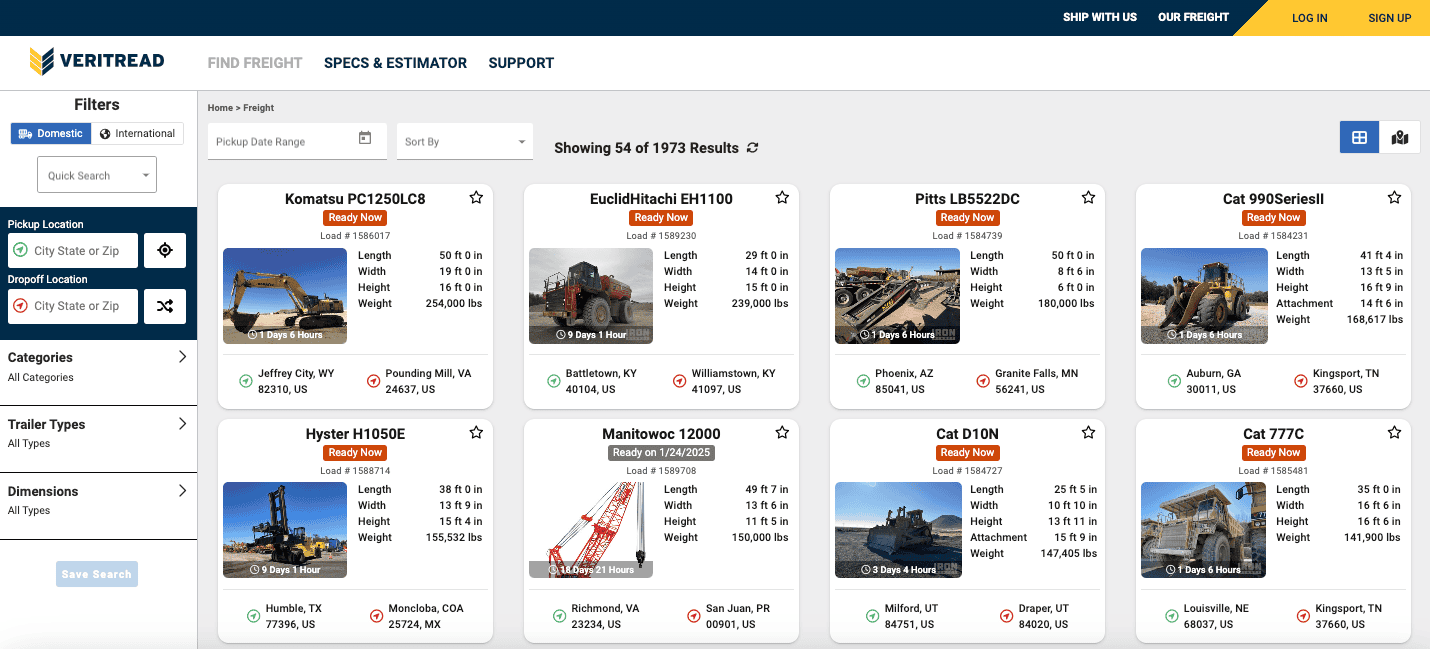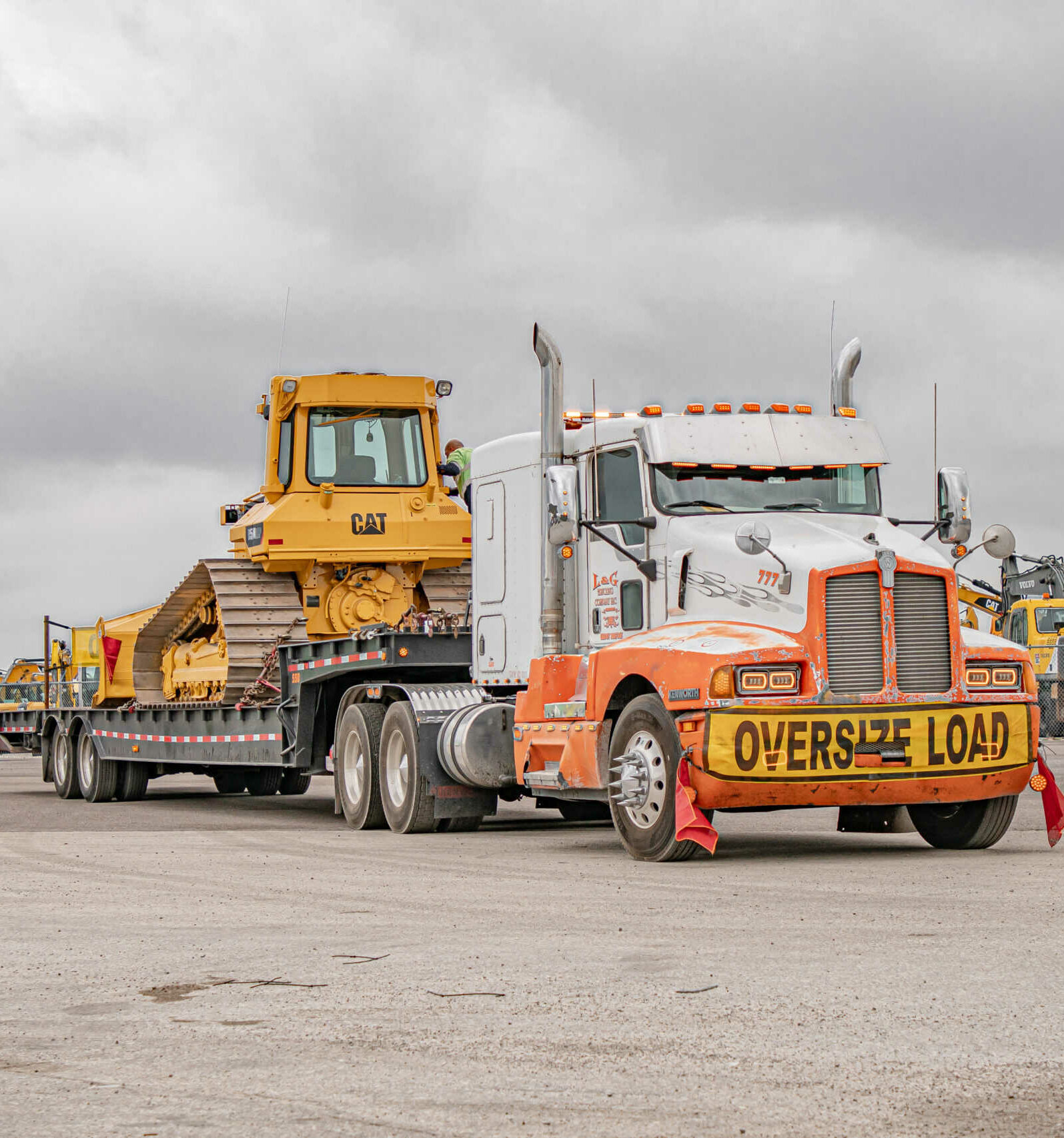Heavy Haul Transport in Specific Industries

Welcome to the world of heavy haul transport, where loads travel over continents, powering industries and shaping landscapes. In this article, we go on a journey through the web of heavy haul transportation, exploring its variations across different industries like construction, energy, and manufacturing. From the wind-swept expanses of renewable energy to the bustling hubs of oil and gas, we will talk about the unique challenges, pivotal roles, and solutions that define heavy haul transport in each domain. Join us as we unravel the mechanics behind the world of heavy haul.
Outline:
- How Does Heavy Haul Transport Differ Between Industries like Construction, Energy, and Manufacturing?
- What are the Unique Challenges and Requirements for Heavy Haul Transportation in the Wind Energy Sector?
- How is Heavy Haul Transport Utilized in the Oil and Gas Industry to Move Massive Equipment?
- What Role Does Heavy Haul Transportation Play in the Success of Major Infrastructure Projects?
- How Do Heavy Haul Transport Companies Cater to the Specific Needs of Clients in Different Industries?
How Does Heavy Haul Transport Differ Between Industries like Construction, Energy, and Manufacturing?
While the main concept of heavy haul transport remains the same (moving oversized, overweight cargo) across industries like construction, energy, and manufacturing, there are some key differences:
Cargo Type:
- Construction: Large excavators, bulldozers, cranes, concrete beams, asphalt pavers, and etc.
- Energy: Wind turbine components (blades, nacelles, towers), transformers, generators, pipelines, and drilling equipment. May involve oversized spools of cable or specialized equipment for delicate solar panels.
- Manufacturing: Oversized machinery, industrial tanks, reactors, and processed materials (coils of steel, large spools of cable).
Planning and Permits:
- Similarities: All three industries require permits for exceeding size and weight limitations. Route planning is important to avoid low bridges, narrow roads, and tight corners. Pilot cars and escorts are often needed for oversized loads.
- Differences: Energy projects, especially wind farms, may require planning for remote locations and creating temporary roads. Construction projects in urban areas may face stricter permit limitations due to traffic congestion.
Regulations:
- Similarities: All industries must comply with federal and state regulations regarding load size, weight, and safety protocols.
- Differences: Energy transportation, especially for wind turbine components, may have additional regulations specific to fragile or unbalanced loads. Manufacturing may have specific rules depending on the material being hauled (e.g., hazardous materials).
Considerations:
- Construction: Maneuvering large equipment around a jobsite may require special trailers and attention to ground conditions to avoid damaging the load or roadway.
- Energy: Transporting wind turbine blades requires specialized trailers that can extend to accommodate the massive length. Protecting these fragile blades from wind shear during transport is a major concern.
- Manufacturing: Some loads may be very delicate or require specific temperature or humidity controls during transport.
What are the Unique Challenges and Requirements for Heavy Haul Transportation in the Wind Energy Sector?

Wind energy throws some special challenges at heavy haul transportation companies. Here are some of the unique hurdles they need to overcome:
- Oversized and Uneven Loads: Wind turbine components are true giants. Tower sections can stretch over 300 feet, blades can exceed 200 feet in length, and nacelles (the housing for the turbine’s machinery) can weigh in at hundreds of tons. This size and weight combination pushes the limits of what can be legally transported on roads.
- Permitting Nightmares: Because of their size and weight, wind turbine components qualify as oversized and overweight loads. This means obtaining permits from a variety of local and state authorities for every leg of the journey. The process can be time-consuming and require route planning that avoids obstacles like low bridges, narrow roads, and tight turns.
- Remote Locations, Weak Infrastructure: Wind farms are often sited in remote areas with strong, consistent winds. The challenge? These locations often lack the robust infrastructure of urban or suburban areas. Roads may not be designed for the weight of massive turbine components, and narrow, winding roads can add difficulty. Sometimes, temporary roads need to be built to access the wind farm site.
- The Last Mile: Even after reaching the wind farm, challenges remain. The final assembly of the turbine often requires cranes with a large lifting capacity. Setting up these cranes and ensuring they have stable ground to operate on in sometimes soft or uneven terrain can be a significant hurdle.
- Protecting the Blades: Wind turbine blades are long, slender, and incredibly expensive. During transport, they’re vulnerable to damage from wind shear, which can cause them to crack or even snap. Specialized trailers and careful route planning are crucial to minimize this risk.
How is Heavy Haul Transport Utilized in the Oil and Gas Industry to Move Massive Equipment?

The oil and gas industry relies heavily on heavy haul transport to move the massive equipment needed for various stages of exploration, drilling, and extraction. Here’s how heavy haul comes into play:
- Moving Drilling Rigs: These complex structures come in various sizes depending on the drilling depth and environment. Heavy haul trucks with specialized trailers (often lowboys to accommodate the rig’s height) transport disassembled rig components to the drilling site. Cranes are often involved in the loading and unloading process.
- Transporting Equipment Modules: Oil and gas processing facilities utilize pre-made modules containing essential equipment like separators, filters, and compressors. Heavy haul transports these modules, ensuring safe and secure delivery to the construction site.
- Hauling Pipelines: Large diameter pipes for transporting oil and gas over long distances are typically delivered in sections. Heavy haul trucks with specialized trailers carry these lengthy pipe sections to the designated laying site.
- Oversized Equipment for Refineries: Refineries require massive equipment for processing crude oil into usable products. Heavy haul transport moves these oversized components, like reactors, storage tanks, and distillation towers, to the refinery for assembly.
- Remote Locations: Similar to wind energy, oil and gas exploration often ventures into remote regions. Heavy haul companies with expertise in navigating challenging terrain and weather conditions are essential for delivering equipment to these remote sites.
What Role Does Heavy Haul Transportation Play in the Success of Major Infrastructure Projects?
Heavy haul transportation plays a critical role in the success of major infrastructure projects by ensuring the timely and safe delivery of oversized, overweight components that are essential for construction. Here’s how it contributes:
- Large-Scale Components: Major infrastructure projects like bridges, tunnels, power plants, and transportation hubs rely on pre-fabricated elements that are too large or heavy for conventional transportation. Heavy haul delivers these elements, such as bridge girders, tunnel boring machines, turbine generators, and massive steel beams.
- Specialized Equipment: Construction of these projects requires specialized equipment that isn’t readily available on-site. Heavy haul transports cranes with immense lifting capacities, concrete pump trucks, and other machinery needed for various stages of construction.
- Timely Delivery: Delays in receiving crucial components can significantly impact the timeline of a major infrastructure project. Heavy haul transportation companies specialize in planning efficient routes, obtaining permits, and coordinating logistics to ensure on-time delivery, keeping the project on schedule.
- Minimizing Disruptions: The oversized nature of heavy haul cargo necessitates careful route planning to minimize disruptions to traffic flow. This can involve nighttime transportation, utilizing specific routes, and collaborating with local authorities to ensure smooth passage.
- Specialized Expertise: Heavy haul companies possess the expertise and equipment specifically designed to handle oversized and overweight cargo safely. This includes using specialized trailers, securing loads with heavy-duty rigging techniques, and employing experienced drivers trained for these unique challenges.
- Maintaining Infrastructure: Major infrastructure projects often involve repairs or upgrades to existing structures. Heavy haul transports pre-fabricated elements, replacement parts, and construction materials to the project site, facilitating the maintenance and improvement of our infrastructure.
In conclusion, heavy haul transportation is essential for delivering the building blocks for major infrastructure projects. Their expertise in navigating complex logistics, ensuring safe transport, and sticking to strict regulations is crucial for the timely and successful completion of these large-scale endeavors.
How Do Heavy Haul Transport Companies Cater to the Specific Needs of Clients in Different Industries?
Heavy haul transport companies mold their services to meet the specific needs of clients across various industries. Here’s how they adapt their approach:
- Cargo Knowledge: Heavy haul companies invest in understanding the typical cargo of their target industries. For instance, they’ll be familiar with the dimensions and weight limitations of wind turbine blades for the energy sector or the specific needs for transporting delicate pre-fabricated building elements in construction.
- Specialized Equipment: Companies may invest in trailers specifically designed for certain industries. Extendable trailers for wind turbine blades, lowboy trailers for construction equipment, and temperature-controlled trailers for some manufactured goods are all examples.
- Navigating Regulations: Each industry may have specific regulations regarding the transportation of their cargo. Oil and gas might require permits for hazardous materials, while wind energy may have limitations on wind shear risks during blade transport. Heavy haul companies stay updated on these regulations and guide clients through the permitting process.
- Remote Locations: Some industries, like wind and oil & gas, often operate in remote areas. Heavy haul companies develop expertise in navigating challenging terrain, obtaining permits for off-road travel, and planning routes that minimize environmental impact.
- Urban Challenges: Construction projects in urban areas require heavy haul companies to plan routes that avoid traffic congestion, work within tight spaces, and minimize disruptions to public infrastructure. They may utilize nighttime transportation or collaborate with local authorities for road closures.
- Safety Protocols: Safety is paramount in heavy haul transport. Companies tailor their safety protocols to the specific cargo and industry. For example, securing wind turbine blades for wind shear resistance or following specific procedures for hazardous materials in the oil and gas industry.
- Value-Added Services: Some companies offer additional services beyond just transportation. This might include assistance with rigging and securing cargo, on-site logistics coordination at the destination, or even route planning software specifically designed for oversized loads.
By understanding these specific needs and tailoring their services accordingly, heavy haul transport companies become valuable partners to clients across diverse industries, ensuring the safe, efficient, and compliant transportation of oversized and overweight cargo.
Why Join VeriTread As A Transport Provider?
VeriTread has 100’s of loads that you won’t find anywhere else with new loads listed every day. When you complete a profile on VeriTread, we learn detailed information about your equipment, your capabilities, and the areas you service. We combine this information with our patent pending freight matching technology to proactively find you the best paying freight available. VeriTread is reserved only for carriers, brokers, and forwarders, who are properly bonded, licensed, and insured which reduces overall risk as well as keeps rates at a fair and profitable level.
veritread products
Top Articles
Freight Types
recent posts

Basic Tips of Heavy Equipment Transport

Understanding Equipment Transport Services



